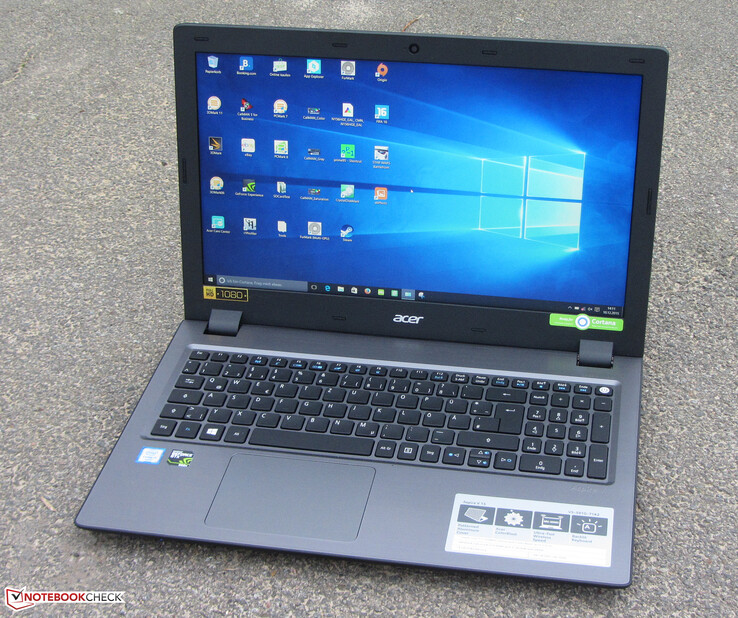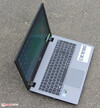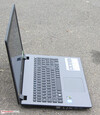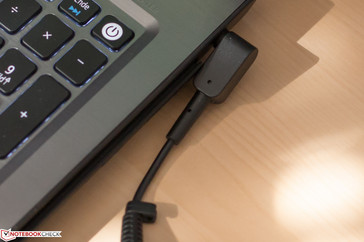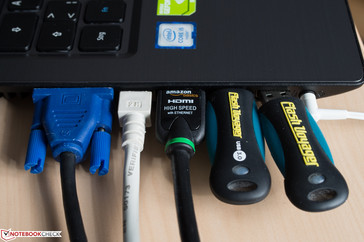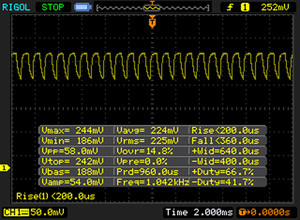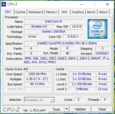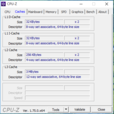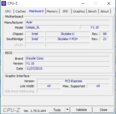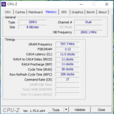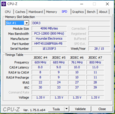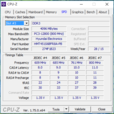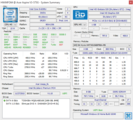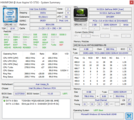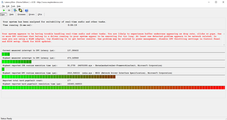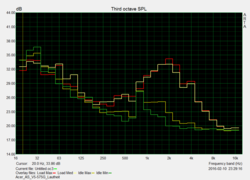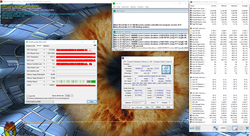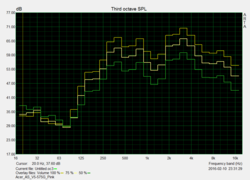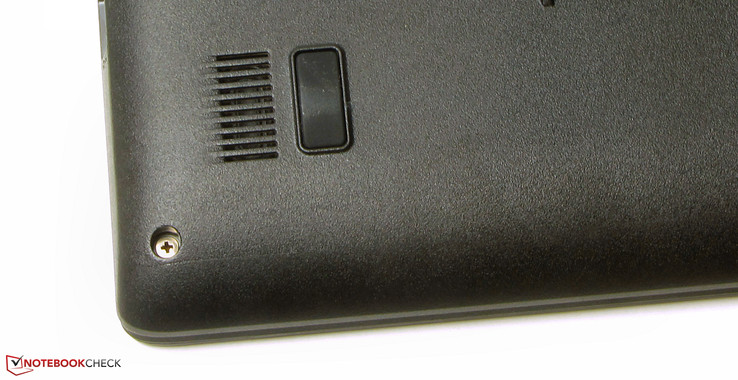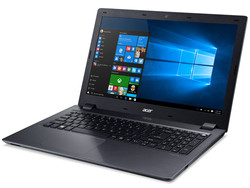Acer Aspire V3-575G-5093 Notebook Review

For the original German review, see here.
The Aspire V3-575G-5093 is a middle-class multimedia allrounder notebook. Outfitted with a modern and frugal Intel Core i5-6200U Skylake dual-core processor, the Aspire won't set new records, but its performance should be more than adequate for running a variety of programs and for multitasking. Same is true for the Nvidia GeFoce GTX 940M, which offers enough performance for casual gaming. The notebook uses the same chassis as the Acer Apsire V5-591G-71K2 and comes with the same display and keyboard. The port distribution is identical as well, although our version also houses a DVD burner.
Direct competitors are the Toshiba Satellite L50-C-275, which features the same CPU, but a weaker GPU, the Medion Akoya E6422, which doesn't come equipped as well, but only costs half, and the higher-end sibling, which did quite well when we reviewed it.
Case
Our review notebook is essentially a less powerful version of the Acer Aspire V5-591G-71K2.
Both the chassis as well as the ports and their distribution are identical, save for the fact that the V3-675G comes with an optical drive, but in turn it now lacks an empty M.2 slot.
Connectivity
The Aspire is up to par as far as the connectivity options are concerned, although there aren't any exotic ports or modern interfaces. Just like its sibling, the review notebook has almost all ports located on the left side towards the front. The two USB 3.0 ports in particular can interfere with each other. External monitors connect either via VGA or HDMI. A DVD optical drive on the right side rounds out the feature set.
Card Reader
The SD card reader performs almost identically to the one the Acer Apsire V5-591G-71K2 is equipped with and is therefore one of the slower examples of its kind. Large data blocks are copied at a maximum transfer rate of 24.9 MB/s; 250 JPG-files (around 5 MB each) are copied at only 14.3 MB/s. For these tests, we always use our reference SD card Toshiba Exceria Pro SDXC 64 GB UHS-II.
Display
Here just a brief comment:
Both the review candidate as well as the Acer Apsire V5-591G-71K2 make use of the same panel. We conducted the same tests and noticed that the PWM frequencies are much higher here, even though all other results are more or less identical (within the tolerance limit).
Screen Flickering / PWM (Pulse-Width Modulation)
| Screen flickering / PWM detected | 1042 Hz | ≤ 90 % brightness setting | |
The display backlight flickers at 1042 Hz (worst case, e.g., utilizing PWM) Flickering detected at a brightness setting of 90 % and below. There should be no flickering or PWM above this brightness setting. The frequency of 1042 Hz is quite high, so most users sensitive to PWM should not notice any flickering. In comparison: 53 % of all tested devices do not use PWM to dim the display. If PWM was detected, an average of 8142 (minimum: 5 - maximum: 343500) Hz was measured. | |||
Performance
The Aspire is a middle-class multimedia notebook. Multitasking poses no problem and the notebook can even handle some gaming. As equipped, our review notebook sells for 790 Euro (~$890). Users who require a more powerful notebook should take a look at the Acer Apsire V5-591G-71K2 with a quad-core CPU. This version sells for 1000 Euro (~$ 1120), but it lacks an optical drive.
We should note that LatencyMon revealed some issues especially concerning real-time audio. At maximum load levels, we could indeed induce some crackling when we played music. Especially high GPU loads cause issues here.
Processor
Acer uses a new Skylake dual-core SoC from Intel. With a TDP of 15 watts, the CPU is a frugal middle-class ULV model. For most users, the performance should be more than adequate. The i5-6200U has nominal clock speed of 2.3 Gz; the Turbo can overclock both cores to 2.7 Ghz and one core to 2.8 GHz, respectively. With the notebook running on battery power and under sustained load, the clock speed of the CPU takes some hits and we saw short-term drops from 2600 MHz down to 400 MHz as a result.
The Broadwell-predecessor i5-5200U clearly trails the new CPU, which features a better architecture with slightly higher clock speeds and improves upon the scores of the older version by between 10 and 15 percent. There are no noticeable differences in performance between our review notebook and the Toshiba Satellite L50-C-275, which is equipped with the same CPU.
The more potent sibling Acer Aspire V5-591G-71K2 comes with the quad-core i7-6700HQ (also Skylake), which is nearly twice as powerful and leaves the i5-6200U in the dust.
A less expensive alternative is the Medion Akoya E6422, which features the less powerful i3-6100U. In the Cinebench R15 multi-test, this CPU only trailed the i5 processor by about 10 %, however.
| Cinebench R15 - CPU Multi 64Bit | |
| Acer Aspire V5-591G-71K2 | |
| Toshiba Satellite L50-C-275 | |
| Acer Aspire V3-575G-5093 | |
| Medion Akoya E6422 | |
System Performance
The decent hardware allows the Aspire to handle tasks without issues for the most part. We've chosen the verbiage "for the most part" here, since Windows 10 proved to be somewhat of nuisance: at times, menu items simply froze during our tests. An example: the Aspire had problems with wireless and informed us that an Internet connection wasn't possible despite the fact that the notebook was connected. Our attempt to disconnect and then reconnect resulted in the system freezing and becoming unrepsonsive. Die battery status icon wouldn't do anything under full load when we hovered the mouse cursor over it and Cortana refused to work at all under the same conditions.
Despite these annoyances - which in our opinion can be attributed to Windows 10 as stated above - the results of the PCMark benchmarks are generally quite good. Although the Aspire can't pull away from the competition, the performance is still more than sufficient during daily use. The differences to the Toshiba Satellite (same CPU) are minimal.
The Medion Akoya clearly outperforms the review notebook during the PCMark7 test. The reason is the Akoya's fast SSD, which offers more performance and heavily influences the result of this particular benchmark.
The Acer Aspire V5-591G-71K2 is the undisputed leader in our comparison, since it features a significantly more powerful quad-core CPU and a more potent GPU as well.
| PCMark 7 Score | 2865 points | |
| PCMark 8 Home Score Accelerated v2 | 3163 points | |
| PCMark 8 Creative Score Accelerated v2 | 3578 points | |
| PCMark 8 Work Score Accelerated v2 | 3916 points | |
Help | ||
| PCMark 8 - Home Score Accelerated v2 | |
| Acer Aspire V5-591G-71K2 | |
| Acer Aspire V3-575G-5093 | |
| Toshiba Satellite L50-C-275 | |
| Medion Akoya E6422 | |
| PCMark 7 - Score | |
| Acer Aspire V5-591G-71K2 | |
| Medion Akoya E6422 | |
| Acer Aspire V3-575G-5093 | |
Storage Devices
For data storage, Acer uses a regular Toshiba HDD. The drive has a capacity of 1000 GB and operates at 5400 RPM. The results of the tools HDTune and CrystalDiskMark are within the normal range for this type of hard drive. The Acer Aspire V5-591G-71K2 has a similar drive, but additionally features 8 GB of SSD cache. The other two competitors come with SSDs, which guarantee much better read and write performance. The Medion Akoya comes with a 128 GB SSD; the SSD in the Toshiba Satellite has a capacity of 256 GB.
GPU Performance
The Aspire features a middle-class Nvidia GeForce 940M, which is based on the Maxwell architecture. The GPU supports DirectX 11 and has a nominal clock speed of 1072 GHz, which can be overclocked to a maximum of 1176 GHz. 2048 MB off DDR3 RAM running at 1001 MHz round out the package. Compared to the predecessor GeForce 840M, the clock speed is only about 5% higher, so the performance hasn't improved by much. The actual difference between the 940M and the 930M is also rather small, which is noticeable as far as the gaming performance is concerned. For that reason, the Toshiba Satellite and the Aspire are almost dead even. The Medion Akoya falls behind, since it doesn't come with a dedicated GPU. The Acer Aspire V5-591G-71K2 features a GeForce 950M GPU and outperforms the review notebook by a large margin.
In addition to the GeForce GPU, the notebook also has Intel's HD Graphics 520 on board. Nvidia's Optimus technology allows switching from on GPU to the other, which can increase the battery life. Less demanding tasks are normally handled by the integrated Intel HD. The switching happens automatically, although the user can interfere if desired.
When the Aspire is running on battery power, the GPU drops down to 33.8 MHz about every two seconds before recovering to 1176 MHz. When the notebook is plugged in, this behavior disappears.
| 3DMark 11 Performance | 2568 points | |
| 3DMark Ice Storm Standard Score | 37609 points | |
| 3DMark Cloud Gate Standard Score | 6098 points | |
| 3DMark Fire Strike Score | 1483 points | |
Help | ||
| 3DMark 11 - 1280x720 Performance | |
| Acer Aspire V5-591G-71K2 | |
| Acer Aspire V3-575G-5093 | |
| Toshiba Satellite L50-C-275 | |
| Medion Akoya E6422 | |
| 3DMark - 1280x720 Cloud Gate Standard Score | |
| Acer Aspire V5-591G-71K2 | |
| Acer Aspire V3-575G-5093 | |
| Toshiba Satellite L50-C-275 | |
| Medion Akoya E6422 | |
Gaming Performance
The specs give insight into the expected performance, which of course isn't breaking any new grounds. There's sufficient power to run less demanding titles with the settings on high. The native resolution is often usable as long as the details are reduced - at least as long as the game in question doesn't have high demands on the hardware. The Toshiba Satellite offers about the same performance, while the Aspire V5-591G-71K2 once again pulls ahead easily. The latter notebook cost about 200 Euro (~$225) more and retails for about 1000 Euro (~$ 1120) at the moment. At the time of writing, both the review notebook as well as the Toshiba Satellite L50-C-275 can be found online for a little less than 800 Euro (~$890).
We encountered the aforementioned occasional slight crackling-sounds when playing demanding titles - quite noticeable, for example, during the slide show of Rise of the Tombraider. BioShock Infinite, on the other hand, ran well without any stutters even with the settings on high.
| low | med. | high | ultra | |
|---|---|---|---|---|
| Tomb Raider (2013) | 82.5 | 52.1 | 35.4 | 16.8 |
| BioShock Infinite (2013) | 73.5 | 51.4 | 42.27 | 20.86 |
| Rise of the Tomb Raider (2016) | 22.74 | 18.28 | 10.84 |
| Tomb Raider | |
| 1920x1080 Ultra Preset AA:FX AF:16x | |
| Acer Aspire V5-591G-71K2 | |
| Acer Aspire V3-575G-5093 | |
| Toshiba Satellite L50-C-275 | |
| Medion Akoya E6422 | |
| 1366x768 High Preset AA:FX AF:8x | |
| Acer Aspire V5-591G-71K2 | |
| Acer Aspire V3-575G-5093 | |
| Toshiba Satellite L50-C-275 | |
| Medion Akoya E6422 | |
| 1366x768 Normal Preset AA:FX AF:4x | |
| Acer Aspire V5-591G-71K2 | |
| Toshiba Satellite L50-C-275 | |
| Acer Aspire V3-575G-5093 | |
| Medion Akoya E6422 | |
| 1024x768 Low Preset | |
| Acer Aspire V5-591G-71K2 | |
| Toshiba Satellite L50-C-275 | |
| Acer Aspire V3-575G-5093 | |
| Medion Akoya E6422 | |
| BioShock Infinite | |
| 1920x1080 Ultra Preset, DX11 (DDOF) | |
| Acer Aspire V3-575G-5093 | |
| Toshiba Satellite L50-C-275 | |
| 1366x768 High Preset | |
| Acer Aspire V3-575G-5093 | |
| Toshiba Satellite L50-C-275 | |
| 1366x768 Medium Preset | |
| Acer Aspire V3-575G-5093 | |
| Toshiba Satellite L50-C-275 | |
| 1280x720 Very Low Preset | |
| Acer Aspire V3-575G-5093 | |
| Toshiba Satellite L50-C-275 | |
Emissions
System Noise
During idle, the fan spins up occasionally, but remains unobtrusive. The hard drive is always audible, but never gets annoying, either. With an average noise level of 34.8 dB, the Acer isn't much louder than the competition.
Under load (42 dB), the Aspire is noisier than the Toshiba Satellite or the Medion Akoya. The Aspire V3-575G is almost as loud as the Aspire V5-591G-71K2 - not a great result, given that the former only consumes half as much power. All in all, the Aspire never gets bothersome though.
Noise level
| Idle |
| 33.5 / 34.8 / 34.8 dB(A) |
| HDD |
| 34 dB(A) |
| DVD |
| 37.5 / dB(A) |
| Load |
| 41.4 / 42 dB(A) |
 | ||
30 dB silent 40 dB(A) audible 50 dB(A) loud |
||
min: | ||
| Acer Aspire V3-575G-5093 GeForce 940M, 6200U, Toshiba MQ01ABD100 | Acer Aspire V5-591G-71K2 GeForce GTX 950M, 6700HQ, Toshiba MQ02ABF050H (SSHD 500 + 8 GB) | Medion Akoya E6422 HD Graphics 520, 6100U, Phison 128GB PS3109-S9 | Toshiba Satellite L50-C-275 GeForce 930M, 6200U, Samsung SSD PM871 MZNLN256HCHP | |
|---|---|---|---|---|
| Noise | 1% | 6% | 13% | |
| off / environment * (dB) | 31.3 | 22 30% | ||
| Idle Minimum * (dB) | 33.5 | 32.6 3% | 34.7 -4% | 31.3 7% |
| Idle Average * (dB) | 34.8 | 32.6 6% | 34.7 -0% | 31.3 10% |
| Idle Maximum * (dB) | 34.8 | 32.6 6% | 34.7 -0% | 32.2 7% |
| Load Average * (dB) | 41.4 | 42.7 -3% | 34.5 17% | 36.4 12% |
| Load Maximum * (dB) | 42 | 45.5 -8% | 34.7 17% | 36.6 13% |
* ... smaller is better
Temperature
The Aspire handled the stress test (Prime95 and Furmark are running for at least one hour) in different fashion depending on if we used external or battery power. With the notebook plugged in, full performance is still available even after a run time of an hour. Unfortunately, the same isn't true when the notebook is disconnected from the outlet: after a short period, the GPU starts fluctuating between 33.8 and 1176 MHz ever second or so, while the CPU bounces between 400 and 2500 MHz. The Aspire V5-591G-71K2, the Toshiba Satellite L50-C-275, as well as the Medion Akoya E6422 aren't affected by fluctuating performance.
During idle, the notebook remains cool to the touch. At up to 32°C, the Aspire gets warmer than the direct competition, however. The review notebook performs similar here to its sibling, which reached 34°C in the same spot. The Medion Akoya only sees similar temperatures under load.
During the stress test, the upper gets quite warm towards the middle at about 47°C. The area around the fan exhaust is the hot spot at almost 60°C. The Aspire V5-591G-71K2 gets hotter still; the Toshiba Satellite remains both cooler and more quiet at 47°C.
(-) The maximum temperature on the upper side is 47.2 °C / 117 F, compared to the average of 36.9 °C / 98 F, ranging from 21.1 to 71 °C for the class Multimedia.
(-) The bottom heats up to a maximum of 59.6 °C / 139 F, compared to the average of 39.2 °C / 103 F
(+) In idle usage, the average temperature for the upper side is 27.7 °C / 82 F, compared to the device average of 31.3 °C / 88 F.
(+) The palmrests and touchpad are reaching skin temperature as a maximum (32.7 °C / 90.9 F) and are therefore not hot.
(-) The average temperature of the palmrest area of similar devices was 28.7 °C / 83.7 F (-4 °C / -7.2 F).
Speakers
The speakers are located on the bottom and are capable of generating full-bodied sound, although bass is lacking. The preinstalled Dolby Digital Plus software allows the user to modify the output to his or her liking. Overall sound quality is acceptable and even longer listening periods never become painful.
Energy Management
Power Consumption
The Aspire doesn't draw a lot of power. During idle, we recorded 11 watts or less, which is certainly acceptable for an ULV CPU. During the stress test with both the CPU and GPU operating at their respective maximums, the power requirement jumped to 58 watts. The Toshiba Satellite, which is equipped with the same hardware, draws an almost imperceptible amount less. At maximum load levels, the Medion Akoya needs about half, the sibling about twice as much power as the review candidate.
| Off / Standby | |
| Idle | |
| Load |
|
Key:
min: | |
Battery Life
The overall run times on battery are acceptable. Acer didn't include the 56 Wh battery the more powerful Acer Aspire V5-591G-71K2 is equipped with, but rather opted for a 37 Wh model, which - despite the ULV CPU - doesn't allow for a longer battery life. The results are still pretty decent, however.
When tasked with the Reader's Test, which we use to establish the maximum run time, the notebook kept going for just over 7 hours. For this test, we turn the display to its minimum brightness, turn of wireless, activate power savings, and deactivate the display timeout.
Our practically relevant WLAN test simulates web browsing. With the display set to 150 cd/m², a script visits a new website every 30 seconds or so. The result of 4 hours is nothing to write home about: the Medion Akoya lasted 40 minutes and the Toshiba Satellite 105 minutes longer.
Under full load, the notebook managed about 2 hours before shutting down.
| Battery runtime | |
| Acer Aspire V3-575G-5093 | |
| WiFi | |
| WiFi v1.3 | |
| Medion Akoya E6422 | |
| WiFi v1.3 | |
| Acer Aspire V5-591G-71K2 | |
| WiFi v1.3 | |
| Toshiba Satellite L50-C-275 | |
| WiFi v1.3 | |
Pros
Cons
Verdict
At the time of writing, the Acer Aspire can be found online for about 790 Euro (~$880). All things considered, the V3-575G is a pretty average multimedia allrounder-notebook, which doesn't manage to stand out from the crowd. The input devices are decent and should permit longer typing sessions without getting tiring in the process. The Toshiba hard drive has a capacity of 1000 GB, which should allow the user to store even larger media libraries. The DVD burner is still a welcome addition and the quality of the chassis is decent, even though there is no maintenance hatch.
The performance is more than adequate. The frugal i5-6200U CPU does well with most normal applications and doesn't get bogged down much when multitasking, either. The Nvidia GeForce 940M handles older and some newer games at low to medium settings. Graphics-intensive titles like Rise of the Tombraider are out of the question, however.
The decent overall impression is marred in several ways. First of all, it's a little disappointing that full performance is out of the question when the notebook is running on battery power. The display is just average and the viewing angles are very restricted. Lastly, the light crackling sounds we encountered during audio playback might deter some multimedia enthusiasts - although it doesn't happen that frequently during normal use.
Those who can accept the drawbacks should be happy with the Aspire, even though it doesn't quite measure up to is more powerful sibling. Considering the price of 800 Euro, we recommend taking some time before deciding between this notebook and available alternatives.
The Acer Aspire V5-591G-71K2 offers more performance and costs 200 Euro (~$225) more. Users who don't want to spend that much money might be quite happy with the Toshiba Satellite L50-C-275, which costs as much the Aspire, but comes with a glossy display with better viewing angles and an SSD. If the CPU performance isn't of the utmost importance, the Medion Akoya E6422 is a better choice.
Acer Aspire V3-575G-5093
- 03/08/2016 v5 (old)
René Kohl




